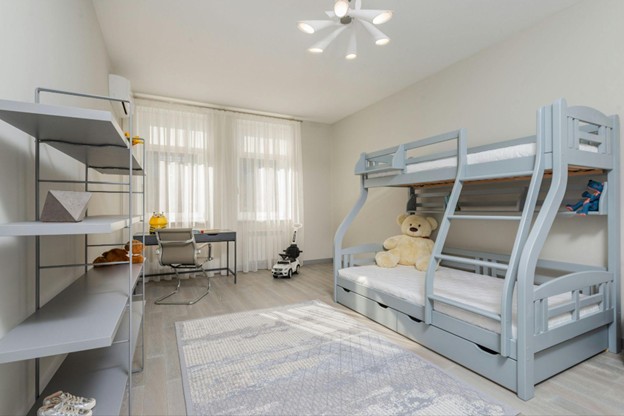
Selling Your Home After You’ve Moved Out
Selling a home after you’ve already moved out isn’t ideal—but it’s common, and completely manageable. You’re balancing two places, possibly two mortgages, and zero daily contact with the home you’re trying to sell. That doesn’t mean you’re stuck. In fact, distance can sharpen your strategy. With smart tools and a few tactical shifts, you can sell faster and with less stress. This isn’t about doing more—it’s about doing the right things in the right order. Here’s how to sell your vacant home like a pro.
Prioritize Remote-Friendly Marketing
You’re not there to greet potential buyers or answer questions, so your listing has to work overtime. This is where immersive online experiences take the lead. Forget one blurry photo and a vague description—today’s buyers expect to walk through your home from their phones. To meet them where they are, you need to host virtual home tours that don’t just show space, but tell a story. Whether that’s a pre-recorded walkthrough with narrative voiceover or a 3D dollhouse view with room tags, the format should reflect how people are actually searching. Let them click through the kitchen while sitting on their couch across town.
Stage It—Even If You’re Gone
Empty homes can feel cold, and buyers struggle to envision how they’d actually live in a space when it’s stripped of all personality. But here’s the good news: you don’t need to hire movers and haul in furniture. Virtual staging has gotten staggeringly realistic—and fast. By uploading clean photos, you can make a vacant house feel lived-in using digital renderings that add warmth, proportion, and style to each room. For higher-end listings or local markets where buyers expect in-person polish, light physical staging—like a set table or styled bookshelf—can do wonders without the cost of full-scale furnishing.
Track Costs Like a Business
Once you’ve moved, every dollar tied up in the old house is part of a ticking clock. Carrying costs—utilities, staging, yard care, insurance—add up fast. What you need is financial visibility. Create a simple spreadsheet or, better yet, use customizable templates that help you track every post-move expense—click here for more. Seeing it all laid out helps you make decisions fast: whether to drop the price, offer incentives, or hold the line for a better buyer. When you treat the sale like a project with a budget, you’re far more likely to close clean.
Don’t Sleep on Curb Appeal
Just because you’re not there doesn’t mean the yard should go wild. A neglected exterior triggers one thought in a buyer’s mind: “What else isn’t being taken care of?” First impressions start at the sidewalk, and a tidy, intentional exterior shows pride and readiness. Consider using simple curb appeal tips like fresh mulch, power washing the siding, repainting the front door, or adding solar lights along the walkway. If you’ve already relocated, hire a local landscaping service to do light maintenance biweekly until the property is off the market.
Make Showings Effortless (for Them)
A buyer shouldn’t have to leap through hoops to see your home. The more friction in the process, the more likely they’ll move on to the next listing. When you’re not living there, that flexibility is a huge advantage—capitalize on it. Set up a secure keyless entry or lockbox, and coordinate with your agent to allow wide showing windows. At the same time, be aware of red flags that could turn buyers off. One way to win here? Avoid common showing mistakes like over-scented rooms, unlit spaces, or leaving personal information visible. Your home should feel inviting, neutral, and accessible at all times.
Keep It Safe and Maintained
Vacant doesn’t have to mean vulnerable. Security isn’t just about preventing break-ins—it’s also about keeping the property market-ready. A leak under the sink or a tripped circuit breaker won’t fix itself. Install smart sensors for water, temperature, and motion that can alert you remotely. If needed, enlist a neighbor or property manager for weekly checks. The goal is peace of mind without constant worry. Use low-cost tools and checklists to keep your vacant home secure and functioning as if someone were living there. A well-maintained home builds buyer trust before they even step inside.
Price for Precision, Not Hope
Pricing a vacant home requires a different kind of sharpness. Buyers know you’re not emotionally tethered anymore—and they assume you’re motivated. That’s not a bad thing if you know how to frame it. Competitive pricing combined with the right presentation can create urgency. Think about who your buyer likely is: first-timers, investors, or downsizers. Tailor your pricing accordingly. One smart approach is to use pricing strategies to attract cash buyers who value speed over perfection. Pair that with a closing timeline that matches their urgency, and you’ll land offers from buyers who are ready to move quickly.
A vacant home doesn’t have to sit quietly and collect dust. With the right systems, it can stand out—clean, staged, priced right, and ready for fast offers. Strip away the noise, simplify the plan, and keep everything visible—from your expenses to your next move. You’re not living there anymore, so let the process reflect that clarity. Focus on friction. Reduce it. Then close clean.
Discover your dream home or maximize your property’s potential with Castle Gate Real Estate Group, Charlotte’s trusted partner in real estate excellence and turn your vacant property into a fast, profitable sale. Call us today at 704-533-9387









